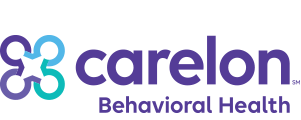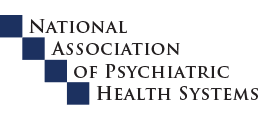By Valerie M. Kading, DNP, PMHNP-BC
Chief Medical Operations Officer
 Women of childbearing years represent approximately 1 out of every 4 individuals globally. In 2015, 1.6 billion women aged 15 to 44 years represented approximately 45% of the total female population (U.S. Census Bureau, 2015). The number of women of childbearing years has been projected to increase by over 0.4 billion between 2002 and 2050 (U.S. Census Bureau, 2015). In 2012, there were nearly 63 million women in the United States aged 15 to 44. Of these women of childbearing years, 6% became pregnant, resulting in 3.9 million births (U.S. Census Bureau, 2012). The total population of women aged 15 to 44 in the United Kingdom in 2014 was 22.5 million with a total of 695,000 births (Office for National Statistics, 2014). Women of childbearing years who represent a significant portion of the population and pregnancy, both intended and unintended, should be considered when addressing the health of this population.
Women of childbearing years represent approximately 1 out of every 4 individuals globally. In 2015, 1.6 billion women aged 15 to 44 years represented approximately 45% of the total female population (U.S. Census Bureau, 2015). The number of women of childbearing years has been projected to increase by over 0.4 billion between 2002 and 2050 (U.S. Census Bureau, 2015). In 2012, there were nearly 63 million women in the United States aged 15 to 44. Of these women of childbearing years, 6% became pregnant, resulting in 3.9 million births (U.S. Census Bureau, 2012). The total population of women aged 15 to 44 in the United Kingdom in 2014 was 22.5 million with a total of 695,000 births (Office for National Statistics, 2014). Women of childbearing years who represent a significant portion of the population and pregnancy, both intended and unintended, should be considered when addressing the health of this population.
Substance use and overdose-related deaths are a public health crisis and women represent a significant portion of this population. An alarming 30% of individuals addicted to substances are women of childbearing years aged 15 to 44. The National Survey on Drug Use and Health (NSDUH) from 2015 shows that approximately 5% of pregnant women in the United States report using illicit substances within the past month, compared to 10% of non-pregnant women (SAMHSA, 2015). Alcohol use among pregnant women was 16.4% compared to 53.2% of non-pregnant women. These results, while promising, may be conservative due to stigma and fear of reporting, and may not have included women who did not know they were pregnant. NSDUH data also suggests that substance use decreases during pregnancy but resumes after pregnancy and beyond.
 Various risk factors exist for illicit substance use, including family history of drug addiction, history of addiction to any drug (including tobacco), history of psychiatric or psychological illness, and history of childhood trauma (SAMHSA, 2015). Research suggests that 55% to 99% of women who abused substances had a significant trauma history (Najavits et al., 1997). Other risk factors include involvement in an intimate relationship with a partner who abuses substances. Protective factors include marriage and partner support.
Various risk factors exist for illicit substance use, including family history of drug addiction, history of addiction to any drug (including tobacco), history of psychiatric or psychological illness, and history of childhood trauma (SAMHSA, 2015). Research suggests that 55% to 99% of women who abused substances had a significant trauma history (Najavits et al., 1997). Other risk factors include involvement in an intimate relationship with a partner who abuses substances. Protective factors include marriage and partner support.
Women are more likely than men to experience co-occurring substance use and mental health disorders. It is estimated that 72% of women diagnosed with alcohol use disorder (AUD) have a co-occurring psychiatric illness, and 86% diagnosed with alcohol dependence have a co-occurring psychiatric illness (Kessler et al., 1997). Anxiety disorders, depression, PTSD, and eating disorders are the most common co-occurring psychiatric illnesses among women (Agrawal et al., 2005). Individualized treatment targeting co-occurring illnesses is critical to addressing the health of the woman during the perinatal period.
Management of a pregnancy in a substance-abusing woman can be complex and involve psychosocial, medical, and addiction considerations. The perinatal period is a critical transitional time in a woman’s life where healthcare providers must address concerns about substance use and mental health issues. Perinatal depression is estimated to affect approximately 10% to 15% of women worldwide and is considered the most significant risk factor for postpartum depression (Agency for Healthcare Research & Quality, 2015; Melville, Gavin, Guo, Fan & Katon, 2010; WHO, 2012b). A systematic review revealed that postpartum depression symptoms were present in 19.7% to 46% of postpartum women who abused substances and those with a history of substance use (Chapman & Wu, 2013). In a sample of 125 women, one-third of opiate-addicted mothers screened positive for major depression, and almost half experienced postpartum depression 6 weeks post-delivery (Holbrook & Kaltenbach, 2012). Perinatal women experiencing depression may be at a higher risk for substance use as a means to self-medicate. Addressing substance use and co-occurring mental health concerns is imperative for a positive outcome for the mother, unborn child, and family.
Substance use during pregnancy has been associated with negative outcomes for the woman and baby, including increased morbidity and mortality for the woman and her child. Pregnant women abusing substances are less likely to obtain consistent obstetric care and have poor medical follow up. Obstetric complications associated with opiate dependence include miscarriage, preterm labor and postpartum hemorrhage. Adverse outcomes for the fetus include stillbirth, prematurity, intrauterine growth retardation (IUGR), and neonatal abstinence syndrome. In a sample of 247 subjects, cocaine and heroin use were both positively associated with IUGR, preterm delivery, and low birth weight (Pinto et al., 2010).
Health care providers are at an optimal position to screen for substance use among perinatal women. Women with histories of psychiatric or substance use should raise concern and trigger focused assessment on substance use. Screening for the use of substances should occur routinely in obstetric/gynecology, primary care, and psychiatric practices to immediately capture substance use among perinatal women and result in referral for treatment. Evidence-based substance use screening tools for perinatal women include ASSIST, CRAFFT, Substance Use Risk Profile-Pregnancy Scale, T-ACE, TICS and TWEAK (Goodman & Wolff, 2013). These screening tools range in sensitivity from 50% to 91% and are validated for prenatal and pregnant women (Goodman & Wolff, 2013).
Valerie M. Kading, DNP, PMHNP-BC, serves as the chief medical operations officer at Sierra Tucson, focusing on enhancing medical system operations and management to facilitate exceptional patient care. Prior to joining Sierra Tucson, Dr. Kading practiced as a board-certified psychiatric mental health nurse practitioner for10 years in a community mental health clinic, working with patients with various mood disorders and co-occurring substance use diagnoses. Dr. Kading specializes in working with perinatal women experiencing psychiatric illness, and continues to be clinically involved with this special population through the Tucson Postpartum Depression Coalition. She is a member of Phi Kappa Phi, Arizona Nurses Association, American Nurses Association, and the American Academy of Nurse Practitioners. Dr. Kading is passionate about her roles at Sierra Tucson, as a psychiatric nurse practitioner and an administrator, and provides compassionate attention to the wellbeing and positive outcomes of residents and their families.













